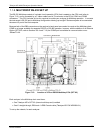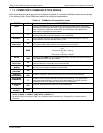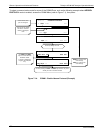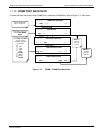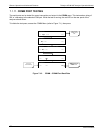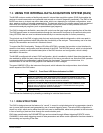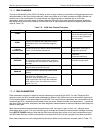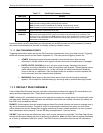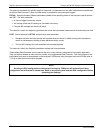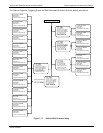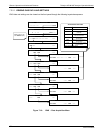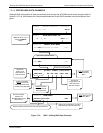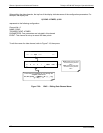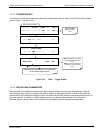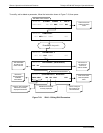
Teledyne API M100E Analyzer Operation Manual Remote Operation and Advanced Features
141
Table 7-7: iDAS Data Parameter Functions
FUNCTION EFFECT
PARAMETER
Instrument-specific parameter name.
SAMPLE MODE INST: Records instantaneous reading.
AVG: Records average reading during reporting interval.
MIN: Records minimum (instantaneous) reading during reporting interval.
MAX: Records maximum (instantaneous) reading during reporting interval.
PRECISION
Decimal precision of parameter value (0-4).
STORE NUM.
SAMPLES
OFF: stores only the average (default).
ON: stores the average and the number of samples in each average for a parameter. This
property is only useful when the AVG sample mode is used. Note that the number of samples is
the same for all parameters in one channel and needs to be specified only for one of the
parameters in that channel.
Users can specify up to 50 parameters per data channel (the M100E provides about 30 parameters). However,
the number of parameters and channels is ultimately limited by available memory.
7.2.1.3. IDAS TRIGGERING EVENTS
Triggering events define when and how the iDAS records a measurement of any given data channel. Triggering
events are firmware-specific and are listed in Appendix A-5. The most common triggering events are:
ATIMER: Sampling at regular intervals specified by an automatic timer. Most trending
information is usually stored at such regular intervals, which can be instantaneous or averaged.
EXITZR, EXITSP, SLPCHG (exit zero, exit span, slope change): Sampling at the end of
(irregularly occurring) calibrations or when the response slope changes. These triggering events
create instantaneous data points, e.g., for the new slope and offset (concentration response)
values at the end of a calibration. Zero and slope values are valuable to monitor response drift
and to document when the instrument was calibrated.
WARNINGS: Some data may be useful when stored if one of several warning messages
appears. This is helpful for trouble-shooting by monitoring when a particular warning occurred.
7.2.2. DEFAULT IDAS CHANNELS
A set of default Data Channels has been included in the analyzer’s software for logging SO
2
concentration and
certain predictive diagnostic data. These default channels include but are not limited to:
CONC: Samples SO
2
concentration at one minute intervals and stores an average every five minutes with a time
and date stamp. Readings during calibration and calibration hold off are not included in the data. By default, the
last 4032 hourly averages are stored.
PNUMTC: Collects sample flow and sample pressure data at five minute intervals and stores an average once a
day with a time and date stamp. This data is useful for monitoring the condition of the pump and critical flow
orifice (sample flow) and the sample filter (clogging indicated by a drop in sample pressure) over time to predict
when maintenance will be required. The last 360 daily averages (about 1 year) are stored.
CALDAT: Logs new slope and offset every time a zero or span calibration is performed. This Data Channel also
records the instrument reading just prior to performing a calibration. Note: this Data Channel collects data based
on an event (a calibration) rather than a timer. This Data Channel will store data from the last 200 calibrations.
04515F DCN6048



